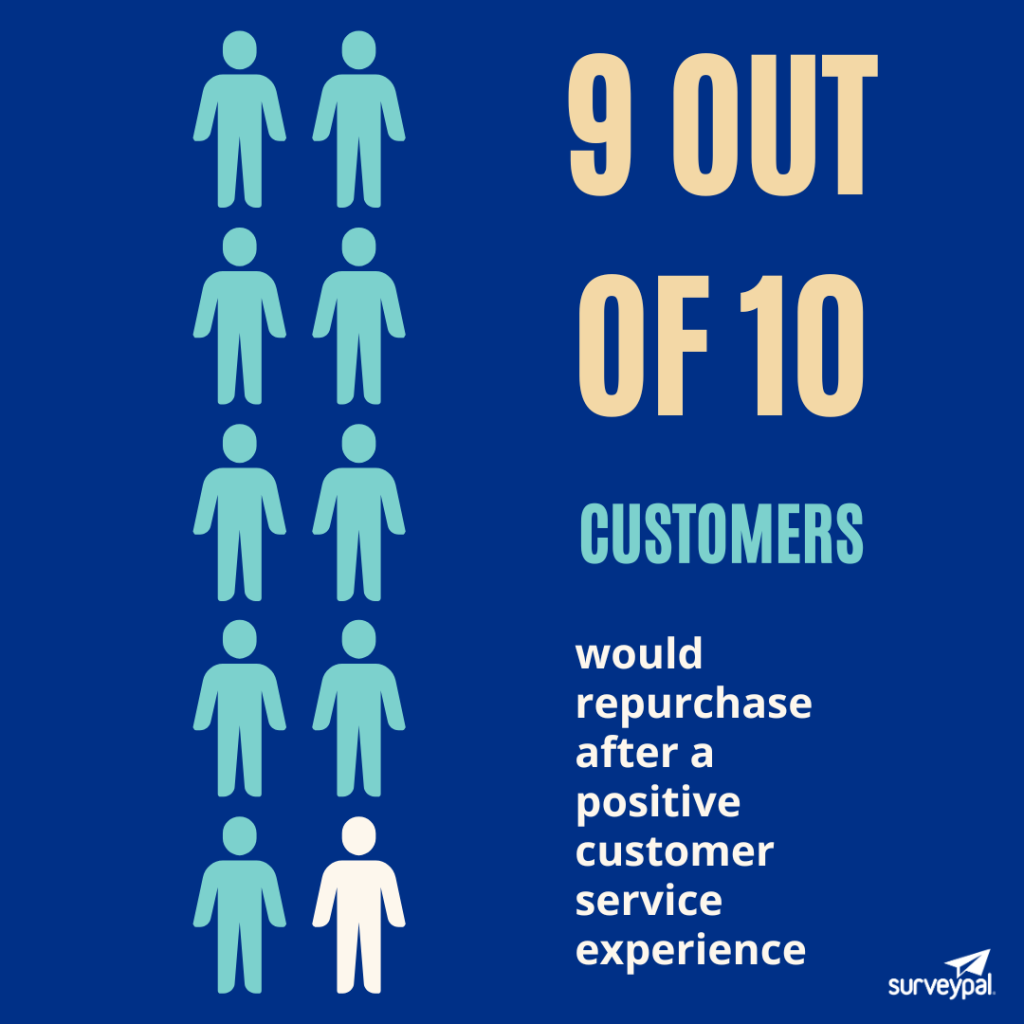“I won’t complain. I just won’t come back.” That’s the thought ping-ponging through the minds of unsatisfied customers. Conversely, 9 out of 10 customers would repurchase once impressed by your customer service.

It’s squeaky bum time for customer service departments. With sales and marketing previously claiming all glory for revenue growth, customer service has now emerged from obscurity to claim its rightful place among the key drivers of revenue growth. The deal sweetener? It costs next to nothing.
The process of improving customer service performance is largely iterative and involves taking an up-close look at the available data. Whether it’s gauging performance to cover your bases in terms of customer retention, or exploring new areas to upscale your customer experience — all of which are essential to increasing your bottom line — you need cold, hard data.
But how do you sort through the clutter of this overwhelming data? Net Promoter Scores, resolution rates, interaction counts, call volumes, and other easily recorded numbers would mean nothing without knowing the ‘which-is-what’. So you’re not left spinning your wheels, you must know which data set matters, and more importantly, how to interpret and analyse it to sharpen your customer service chops for an even better bottomline.
Let this guide be your compass:
What is customer service performance?
While your clients might not love you for the bad service you provide, your competitors will. This is why you need to constantly keep tabs on customer feedback on the level of support they get. Monitoring your customer service performance will allow you to evaluate support effectiveness.
Data from this InfoQuest case study shows that totally satisfied customers generate 2.6x more revenue than customers that are somewhat satisfied, and 14x more revenue than customers that are somewhat dissatisfied. A Deloitte report, also, revealed that customers with a positive experience spend 140% more than those with a negative experience. According to the same report, businesses delivering a consistently positive experience are likely to cut service costs by up to 33%.
A combined reading of the above data shows that whether it’s increasing impulse buys, getting more sales, or more word-of-mouth referrals, quality customer service performance can drive revenue growth without having to increase your marketing & ad spend.
Boosting performance starts with identifying key areas, after which practical steps can be taken to make improvements. This is where customer service performance KPIs come in.
Customer Support KPIs
With insight into customer expectations, support KPIs provide businesses with a way to track and measure progress.

Let’s take a closer look.
Net Promoter® Score
Net Promoter Score (NPS) measures how likely customers are to recommend your products or services to others. It can be used to gauge customer satisfaction, identify areas for improvement, and track success or sales initiatives.
The Net Promoter Score range goes from -100 to 100. Scores below 0 indicate more detractors than promoters, while scores above 0 indicate more promoters than detractors. The closer a company’s NPS score is to 100, the more loyal its customer base is.
Contact Request Abandonment Rate
This explains how many customers exit the queue or ticketing system before support resolves their issue. It is, usually, indicative of a delay in response, or lack of communication or clarity regarding wait times. You want to get this rate as close to zero as possible.
Customer Satisfaction
Customer satisfaction (CSAT) refers to a metric used to measure how happy or satisfied customers are with a company’s products or services. It can also be used to help assess customer loyalty and future business prospects.
A high CSAT usually indicates that customers are pleased and are likely to continue doing business with you. Conversely, a low customer satisfaction may signal that customers are unhappy and may take their business elsewhere.
First Contact Resolution Rate
First contact resolution (FCR) is a customer service metric that measures the percentage of customer issues that are resolved on the first contact with customer service.
A high FCR means that customers are generally happy with the service they’re receiving and that issues are being resolved quickly and efficiently. A low FCR, on the other hand, could mean that there are problems with customer service.
Customer Effort Score
The Customer Effort Score (CES) is a metric that quantifies the ease of the interaction between the customer and your company. CES calculation aims to measure exerted effort and is one of the easiest and most cost-efficient experience metrics.
A high CES indicates that customers are satisfied with their experience and are unlikely to churn. A low CES, on the other hand, indicates that customers are unhappy with their experience and are more likely to churn.
First Response Time
First response time is the average amount of time it takes for a company to respond to an initial contact.
It measures how quickly a company is able to address customer concerns. A high first response time can indicate that a company is not prioritising customer service, leading to a negative brand perception and ultimately, lost business.
Average Resolution Rate
The average resolution rate measures the average number of customer service requests that are resolved within a specific time period. Use this KPI to gauge the effectiveness of your customer service team. You can, for example, measure the average resolution rate per agent to see who is solving tickets faster and who is falling behind.
When your average resolution rate starts to increase, you should try to find the underlying reason why to maintain support quality to the levels you desire.
Are you receiving more complex customer queries? Do you need to develop re-skilling programs from your agents? Are your internal precesses too complex? You will never find answers to any of these questions unless you first track your average resolution rate.
Ticket Volume
This metric tracks the total amount of tickets in your ticket queue over a period of time. Monitoring the ticket volume will give you a 360 view of the health of your support. It will, also, help you understand when it’s time to hire a new member for your team. Additionally, your support tickets include feedback on instances when your product or service didn’t quite meet with customer expectations.
Furthermore, you can use this metric to assess effectiveness and efficiency of customer service initiatives and compare the performance of different customer service teams.
Average Handle Time
The average handle time measures the average time it takes to resolve an issue from start to finish. This metric is important as it can help identify areas where the team may be falling behind or not meeting customer expectations.
You can also use this KPI to benchmark performance against other customer support teams or businesses in general. A high average ticket handling time may indicate that the team is not working efficiently and needs to make some process improvements.
Customer Churn Rate
The churn rate measures the percentage of customers who cancel their subscription or service within a given period of time. A high churn rate can be a sign that your product or service is not meeting customer needs or that your support team is falling short. Churn rate is, also, known as attrition rate.
Benefits of Tracking Contact Center Performance
Improved customer satisfaction
By tracking metrics and KPIs, businesses can better understand customer pain points, and identify areas where the experience is falling short and make changes to improve satisfaction levels and boost loyalty.
Proactive support
Customer service metrics can help identify potential issues and areas of improvement. By tracking them, you can pinpoint patterns and trends that may indicate a need for change or just the need to rethink current processes. You can reevaluate your support strategy and develop proactive steps to meeting customer needs before issues escalate or even before customers are aware of any problems.
For example, when you see a trend in your support requests that indicates that your latest product feature is not as straight forward to use as you thought it was, you can add an in-product message with instructions and best practices on how to use it correctly. Or, if your receive support requests about product onboarding questions, you can create a knowledge base where all that information can live and your clients can access it any time.
Better decision making
Data-driven decisions based on support metrics can help businesses make better decisions about how to allocate resources and improve the customer experience.
Team performance evaluation
Support metrics can help identify bottlenecks in internal processes, spot areas where the team is excelling and uncover training needs. It can help to set expectations for future performance and goal-setting.
Reduced service costs
Even though customer service is one of the most important elements of your business, it can also prove to be one of the most expensive ones as well. However, tracking contact center performance can help reduce service costs by identifying areas for improvement. If a high percentage of customers are reporting the same issue, this indicates that there is a problem with the product or service you need to address. Thus, you can avoid having to deal with the same problems repeatedly, which saves time and money.
When you measure your helpdesk performance, you can also uncover ways to improve operations and reduce service costs. If customers contact support with very simple issues, consider implementing a chat bot to help address those problems. This will decompress your ticket queues and free up your agents time to handle more challenging issues.
Customer Support Data Analysis Explained
As businesses increasingly rely on data to drive decision-making, customer support teams are under pressure to provide accurate and actionable insights. Here’re a few ways to facilitate a seamless data analysis that can drive growth:
Leverage data analysis software
Customer data analysis software – like Surveypal – puts you in the driving seat of your operations as it accurately and efficiently analyzes your KPIs and data sets. This provides you with the insights you need to optimise customer service protocols and processes.
Also, integrating a customer data analysis software to your helpdesk can give you a real-time view of how your team is performing, which can help you set goals, and track progress over time.
Access automatically generated insights and recommendations
Automating the process of customer data analysis is a no-brainer as it can save you time and resources so you can focus on other areas of your business. You also want to leverage these AI-generated insights to course-correct or optimize your processes. For instance, once your solution analyses customer behavioral data to give you a view of accounts that are likely to churn, you can proceed to activate your customer success team to intercept the churn.
Redirect data insights to the right stakeholders
If you want to improve your team’s performance, it’s important that the right people have access to the data and insights you’ve gathered. Be sure to redirect these insights to the appropriate stakeholders so they can take action.
Wrapping Up
And there you have it! Customer data is a valuable asset that can inform every decision you make about your customer service strategy.
With these performance metrics and tips on how to leverage AI-driven automation and data to deliver helpful insights, you’ll be well on your way to providing outstanding service!
Did you like the post?
You might also like:

Surveypal
Everything you need to lead and improve your customer experience. Learn more at surveypal.com, or







